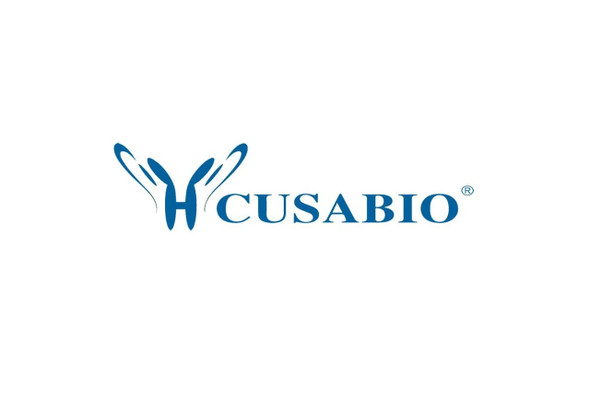Cusabio Human Recombinants
Recombinant Human High mobility group protein B1 (HMGB1), partial | CSB-RP016044h
- SKU:
- CSB-RP016044h
- Availability:
- 3 - 7 Working Days
Description
Recombinant Human High mobility group protein B1 (HMGB1), partial | CSB-RP016044h | Cusabio
Alternative Name(s): High mobility group protein 1 ;HMG-1
Gene Names: HMGB1
Research Areas: Epigenetics and Nuclear Signaling
Organism: Homo sapiens (Human)
AA Sequence: KPRGKMSSYAFFVQTCREEHKKKHPDASVNFSEFSKKCSERWKTMSAKEKGKFEDMAKADKARYEREMKTYIPPKGETKKKFKDPNAPKRPPSAFFLFCSEYRPKIKGEHPGLSIGDVAKKLGEMWNNTAADDKQPYEKKAAKLKEKYEKDIAAYRAKGKPDAAKKGVVKAE
Source: E.coli
Tag Info: N-terminal GST-tagged
Expression Region: 8-179aa
Sequence Info: Partial
MW: 46.7 kDa
Purity: Greater than 90% as determined by SDS-PAGE.
Relevance: DNA binding proteins that associates with chromatin and has the ability to bend DNA. Binds preferentially single-stranded DNA. Involved in V(D)J recombination by acting as a cofactor of the RAG complex. Acts by stimulating cleavage and RAG protein binding at the 23 bp spacer of conserved recombination signal sequences (RSS). Heparin-binding protein that has a role in the extension of neurite-type Cytoplasmic domain processes in developing cells .
Reference: A human placental cDNA clone that encodes nonhistone chromosomal protein HMG-1.Wen L., Huang J.K., Johnson B.H., Reeck G.R.Nucleic Acids Res. 17:1197-1214(1989)
Storage: The shelf life is related to many factors, storage state, buffer ingredients, storage temperature and the stability of the protein itself. Generally, the shelf life of liquid form is 6 months at -20?/-80?. The shelf life of lyophilized form is 12 months at -20?/-80?.
Notes: Repeated freezing and thawing is not recommended. Store working aliquots at 4? for up to one week.
Function: Multifunctional redox sensitive protein with various roles in different cellular compartments. In the nucleus is one of the major chromatin-associated non-histone proteins and acts as a DNA chaperone involved in replication, transcription, chromatin remodeling, V(D)J recombination, DNA repair and genome stability. Proposed to be an universal biosensor for nucleic acids. Promotes host inflammatory response to sterile and infectious signals and is involved in the coordination and integration of innate and adaptive immune responses. In the cytoplasm functions as sensor and/or chaperone for immunogenic nucleic acids implicating the activation of TLR9-mediated immune responses, and mediates autophagy. Acts as danger associated molecular pattern (DAMP) molecule that amplifies immune responses during tissue injury
Involvement in disease:
Subcellular Location: Nucleus, Chromosome, Cytoplasm, Secreted, Cell membrane, Peripheral membrane protein, Extracellular side, Endosome, Endoplasmic reticulum-Golgi intermediate compartment
Protein Families: HMGB family
Tissue Specificity: Ubiquituous. Expressed in platelets (PubMed:11154118).
Paythway: Autophagy-animal
Form: Liquid or Lyophilized powder
Buffer: If the delivery form is liquid, the default storage buffer is Tris/PBS-based buffer, 5%-50% glycerol. If the delivery form is lyophilized powder, the buffer before lyophilization is Tris/PBS-based buffer, 6% Trehalose, pH 8.0.
Reconstitution: We recommend that this vial be briefly centrifuged prior to opening to bring the contents to the bottom. Please reconstitute protein in deionized sterile water to a concentration of 0.1-1.0 mg/mL.We recommend to add 5-50% of glycerol (final concentration) and aliquot for long-term storage at -20?/-80?. Our default final concentration of glycerol is 50%. Customers could use it as reference.
Uniprot ID: P09429
HGNC Database Link: HGNC
UniGene Database Link: UniGene
KEGG Database Link: KEGG
STRING Database Link: STRING
OMIM Database Link: OMIM










